I was sad to learn that my friend, Cliff Slater, died earlier this week at the age of 92. Cliff was a genuine hero who worked hard to improve life for people in Hawaii and in particular devoted thousands of hours and lots of his own money fighting the Honolulu rail boondoggle.
Cliff Slater does battle with the rail transit cabal in this political cartoon by John Pritchett. Used with permission.
Born in England in June, 1933, Cliff grew up in Chingford, a suburb of London. After serving as an officer in the Royal Air Force, he moved to Hawaii in his 20s. In Maui, he met Jack Ackerman and Larry Windley, who had started a tourist diving company called Maui Divers. They had also discovered black coral beds and were making some of the coral into jewelry.
In 1962, they put Cliff in charge of the jewelry company, and he quickly grew it to eclipse the diving business. Until 1982 the company manufactured coral jewelry that it sold wholesale to other jewelers, but in that year he opened the company’s first jewelry stores. Today, Maui Divers is the largest retail jeweler in Hawaii with more than 30 shops around the islands.
Cliff had moved jewelry manufacturing to Honolulu, so he was acutely aware of proposals to build an elevated rail line in Oahu in the 1960s. The first Honolulu streetcars were built in 1901. In 1933 the streetcar company bought its first Twin Coach buses, the first buses that were both less expensive to buy and less expensive to operate than electric streetcars. The company completely replaced Honolulu streetcars with buses in 1941.
In the 1960s, increasing traffic in Honolulu led some people to argue that new rail lines could solve the city’s congestion problems. Shortly after Cliff moved jewelry manufacturing to Honolulu, the federal government gave the city $340,000 to fund a 20-month rail transit study. Ominously, the study’s costs soon grew to more than $1 million and delays postponed its completion for several years. When it finally came out in 1968, the study proposed a 29-mile rail system that would supposedly attract so many riders that fares would cover all of its operating costs.
Many people, including the CEO of Honolulu’s bus system, questioned the need for rail, and Cliff joined the opposition in about 1983. By 1990, the system was projected to cost $1 billion, which would have made it one of the most expensive infrastructure projects in the state’s history. Despite its high cost, an opinion piece in the Honolulu Star-Bulletin argued that the project wouldn’t relieve traffic congestion. The article was by Cliff Slater, who predicted that the rail project would become a “fiscal black hole that we and our children will regret for years to come.”
In 1991, the projected costs of the rail line grew to $1.8 billion, but Cliff and other rail skeptics convinced the Honolulu city council to kill the rail proposal in a 1992 vote. Unfortunately, there is so much money to be made from such megaprojects that they never truly die, so it is no surprise that Cliff had to keep fighting rail transit over the next couple of decades.
One of the arguments frequently used by rail advocates is that streetcars only disappeared because of a General Motors conspiracy to force people off of transit and into automobiles. This idea was promoted by an attorney named Bradford Snell, who wrote a 1973 paper supposedly documenting the conspiracy. Several academics have debunked this idea, but none so well as Cliff, who wrote a 1997 paper responding, point-by-point, to Snell’s paper and showed that, if there was a conspiracy, it was only to take market share from Twin Coach, whose products had already persuaded the streetcar industry to switch to buses.
When the Honolulu rail plan was revived in the early 2000s, its projected cost had grown to $3 billion. Cliff, who had retired as CEO of Maui Divers in 1998, let the movement against the rail project, writing dozens of op-eds and other articles showing why rails made no sense for Honolulu.
By 2010, the projected cost of the rail line had grown to more than $5 billion, but the city council voted to build it anyway. I told Cliff that I thought the city’s environmental impact statement was legally inadequate because it failed to consider a wide range of alternatives. Cliff hired some of the most expensive environmental attorneys in the country to challenge the EIS, and they won, but lost. The court agreed that the range of alternatives wasn’t wide enough, but only ordered to city to consider one slight modification of the rail alternatives considered, not a full bus alternative.
Of course, we now know that the project is going to cost at least $10 billion and won’t be done for more than a decade after its originally planned completion date. Rail advocates tried to blame the cost overruns on Cliff, but we know it is just another example of optimism bias. As Cliff predicted in 1990, the city’s residents are already regretting the project and will continue to do so as long as they have to pay higher taxes to repay the bonds sold to fund it.
Despite losing this battle, Cliff kept working on transit issues. In 2023, Booklocker published his book, Transit: Its Growth, Decline, and Pending Demise, a 360-page review of the history of mass transit. As I wrote in my review, Slater’s book tells “the full story of how we got here” including many historical details I wasn’t familiar with. To help researchers, Slater posted all of the book’s 779 footnotes on line with links to any on-line publications so that readers wouldn’t have to search for them.
Besides rail transit, Cliff worked on a variety of other issues, including education, pension reform, the Jones Act, and the COVID lockdowns. He was a prolific writer, penning close to 200 articles for one newspaper alone, the Honolulu Advertiser.
Cliff was also an accomplished landscape and wildlife photographer, and in 2015 many of his photos were displayed in Honolulu’s Pegge Hopper Gallery. Photography took Cliff to such places as Alaska, Kenya, the Galapagos Islands, the Southwest, and Yellowstone. Looking at his pictures, I wish I had been able to join him on one of those trips.
Democracy is “is a precious, sacred thing worth dying for,” P.J. O’Rourke once wrote. “But — like other precious, sacred things, such as the home and the family — it’s not only worth dying for; it can make you wish you were dead.” For democracy to work, we need people like Cliff Slater to keep the politicians honest and to safeguard the public treasury. Even if they don’t always win, heroes like Cliff leave the world a better place.

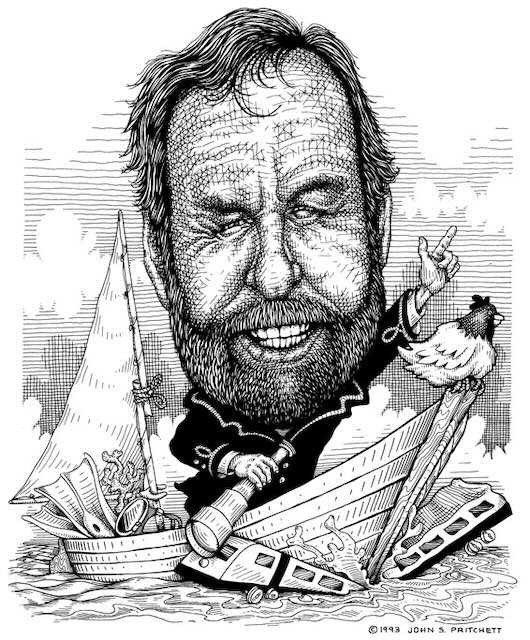
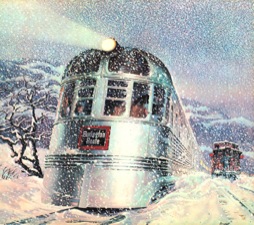
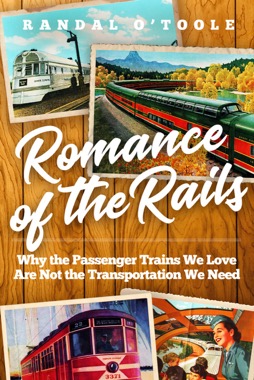

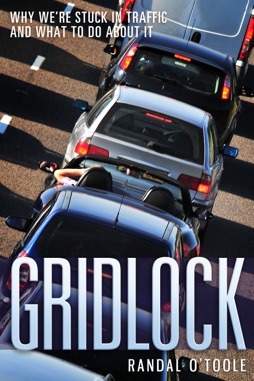
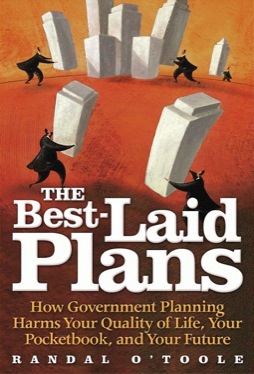
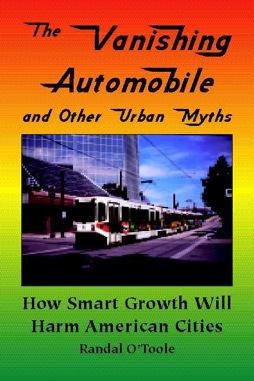

Wear and tear on steel rails is rail transits biggest concern..Contrary to a train or a tram, a trolleybus does not need a rail infrastructure. This not only results in huge cost and time savings, it also saves a large amount of energy in construction. Granted trolleybuses cant go everywhere but with no need for rail and city grid streets they can accomodate a vast multitude of sites and locations. Quito, Ecuador has a trolleybus system, During peak hours, there is a bus every 50 to 90 seconds (because of the high frequency, there are no schedules). El Trole as it’s called transports 262,000 passengers each day. By choosing the cheaper trolleybus over tram or metro, Quito could develop a much larger network in a shorter time. The capital investment of the 19 kilometre line was less than 60 million dollar – hardly sufficient to build 4 kilometres of tram line, or about 1 kilometre of metro line. Lower investment costs also mean lower ticket fares, and thus more passengers.
Hawaii is an Island chain and 70% population live on Just one. Meaning 75% of it’s automobile traffic occur on less 5% landscape.All that Volcanic Power, ignored. This constant pursuit of Wind and solar at huge public expense overlooked critical more useful and reliable Geothermal power. Unlike Solar/Wind’ very land intensive, resource intensive and poor reliability (average Capacity factor of 33%) Geothermal has near 80%+ capacity. So once installed no longer adequate to feed battery/storage media. And with Modern chemistry we don’t need water/steam conversion power anymore either.
How did I not know about this book until today?! I had to go to Amazon to find out it’s only a year old.
I found it amusing that Booklocker filed the book under “Category: Politics:Corruption”! I look forward to reading it.
Great eulogy to an outstanding person I’d never heard of. Thank you.
He wrote a book about how transit’s demise is pending, but in the meantime he’s met his demise and transit is still here, including the train he wasted his final years trying to stop. Ironic! Maybe a lesson there for other aging guys beating their heads against a wall pointlessly.
Sorry to hear of Cliff’s passing. He, along with former governor Ben Cayetano, retired University of Hawaii civil engineering professor Panos Prevedouros and retired University of Hawaii law professor Randall Roth tried their best to warn us that the rail project would be extremely expensive, yet almost completely ineffective at reducing traffic, their originally stated goal.
Time has proven them right. In 2006 the city said $2.5 billion for 28 miles of track from Kapolei to Manoa, the home of the University of Hawaii’s main campus, and the single largest source of traffic on this rock. In 2007, they cut eight miles off the route due to costs, terminating the now 20 mile, $3.6 billion route at Ala Moana. By the time the feds bought into it in 2012, the cost had grown to $5.12 billion with a 2020 completion date, and due to a lack of planning and gross mismanagement, by 2021 it ballooned to $12.45 billion and 11 years behind schedule. hart’s 6/3/2022 “recovery” plan cut the route further to 18.9 miles and 19 stations for $10 billion, but still 11 years late. The final EIS only projected a 1.7% reduction in traffic after 10 years of full time operation.
According to figures published by DTS, the first year of service averaged 3,194 riders per day, with a net revenue of $.53 each. With a daily operating cost of $257k per day, the farebox recovery ratio is well under 1%, and the subsidy per ride is over $80. With the daily operating cost projected to exceed $410k per day by 2030, even before the truncated route is finished, we’re doomed. The difference between fare collections and expenses is paid out of the general fund, 80% of which comes from our property taxes. In 2016, the deputy director of the City and County of Honolulu’s department of budget and fiscal services admitted that our property taxes would go up to fund the gap. Lucky we live in Hawaii?
In 2014 Chariot began operations in Cities like San Francisco.
At it’s peak, Chariot, then a subsidiary of Ford ran services in SF, New York, London, Seattle.
Jitney’s were common in San Francisco up til the 70’s. In the 1910s, there were 1,400 jitneys operating in the city, according to SFMTA records, and they remained ubiquitous into the 1970s, patronized by the city’s Asian and Latin community. But around that time the city wanted to encourage public transit use on MUNI and BART. It disliked the competition, so began issuing fewer permits and forcing jitneys to raise fares, as not to undercut the public option. In 1978, the city stopped issuing permits altogether and Jitney’s were sunk.
AT it’s peak Chariot was carrying 7,000 people a day in the SF/Bay Area… on it’s modest fleet 100 Vans. Barely 5% BART’s total ridership but a significant amount to say least, 100 Vans on the roads/streets is better than 7,000 individual cars and needing 7,000 parking spots.
SFMTA openly (and arrogantly admits) on it’s own website how it disposed of competition.
and how they regulate “Private transit Vehicles”
1. PTV stops are reviewed by the SFMTA to ensure they are in safe, legal locations
2. New PTV routes must complement, rather than compete with, Muni
3. PTVs must share GPS and ridership data with the SFMTA
4. PTVs must provide equivalent service for people with disabilities
5. Labor standards and driver training requirements must be met by PTV providers.
6. Limits on vehicle length and age
7. Annual permit fees are charged to cover the city’s costs of administering and enforcing the program
8. Administrative penalties are charged for permit violation
Translation
1. In other words they say You cant run vehicles whereever you want, especially less than typical areas where poor people need transportation services.
2. No running routes where we have dominion
3. SFMTA demands ridership data to make sure no ones running some “Gypsy cab” runs thru their block.
4. Modifying vans to carry disabled people costs 10-50 thousand dollars, and pre-built vans cost 10-20K more than normal vans. Wheel chair lifts are ADA complient and must be inspected and paid, another costly regulation fee.
5. Licensing is just another regulatory hurdle
6. why Vehicle length matters when MUNI runs 40 foot buses thru narrow city streets but a 22 foot long passenger van is a “Hindrance”
7. You have to pay us for the Privelage of operating a for profit company.
8. And if you don’t follow above rules we’ll fine you into oblivion.
Government Cronyism 101
1: No entity can make us look bad or more incompetent than we already are
2: If it competes with us it must go
3: If it exists, why is it not asking us for permission or kissing our papal ring.
https://pbs.twimg.com/media/GiHIqOIagAAexNt?format=jpg&name=medium
Of course, the massive resources China has spent on building passenger rail is one of several reasons they are teetering on the edge of financial collapse.
Once again JaneJacobsleadingcheerleader is beating it to his Mao propaganda. Just because China built 40,000 km of Rail….
1: China also built 180,000 km of HIGHWAYs that move literally 400 Million daily drivers.
2: Tofu Dreg: China’ high speed rail is a ticking time bomb.
https://www.youtube.com/watch?v=jQ5tKr_y4BA
I am always impressed by the sheer strength of Chinese people who are able to crush concrete with their hands or break steel rebar. I could put on a superman costume and tear up the city if I so choose.
Shout out to the countries that signed the Belt-and-road deals… now suffer the consequences. Defective dams, defective roads, defective bridge.
3: The Average income in China and the cost to run a system meant conventional rail should have been the priority on less profitable lines, which in China meant virtually All of them. With such shoddy construction and poor quality materials HIgh speeds cause vastly more wear and tear.
https://www.youtube.com/watch?v=ER6nWCZvbZE
Debt slavery or debt colonialism won’t work. No matter what the contracts say, nations can simply not pay.
Payment of contracts between countries can only be guaranteed under the threat of military force. That is how the French, English, Dutch, and others maintained and enforced their colonial rule.
Colonial rule has ended. China has no ability to threaten military enforcement of its B&RI contracts. First, China has no expeditionary forces. Secondly, the rest of the world would oppose any Chinese effort to military enforcement of its contracts.
Lastly, any country that was a colony knows exactly what they need to do to oppose any such action. China has screwed up.